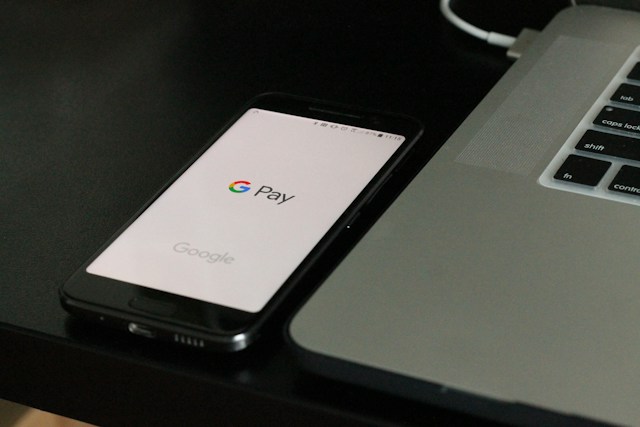Tailoring Your Social Media Strategy for Different Platforms

Have you ever asked yourself how to tailor your social media strategy to different platforms to maximize your audience targeting? If so, you’ve come to the right place. Social media is much more than just a global chatroom. It’s a powerful marketing tool that, when used correctly, can help you connect with your audience in a meaningful way. But not all platforms are created equal, each one has its unique quirks and characteristics that require a different approach.
“The essence of social media is knowing your audience and engaging them in something they love.”
In this comprehensive guide, we’ll go through the ins and outs of adapting your social media strategies to various platforms. We’ll cover the specifics of big names such as Facebook, Twitter, and Instagram, as well as emerging platforms. With this knowledge, you’ll be better equipped to optimize your social media strategy, increase engagement, and foster a stronger connection with your target audience. Get ready to take your social media game to the next level!
Table of Contents
Understanding the Landscape of Different Social Media Strategy Platforms
Moving to the crux of the matter, each social media platform has its own unique environment and audience behavior. Grasping this is pivotal. You wouldn’t craft the same message in the same manner for Snapchat as you would for LinkedIn, right? Let’s dive deeper.
For instance, Facebook prides itself on being the leading global social networking website. As such, your content strategy here should revolve around creating engaging, shareable posts that resonate with a broad user base. Robust multimedia content, like attention-grabbing videos and stunning illustrative photos, can perform exceptionally well here.
On the other hand, Twitter’s rapid-fire, conversation-driven nature makes it the perfect platform for companies looking to engage directly with their customer base or share timely updates. Brevity is the name of the game here — that succinct, witty tweet can make a lot of difference.
Instagram, where aesthetics reign supreme, presents an optimal platform for brands that can leverage captivating visuals. If your brand story can be told through unique images or short videos, Instagram’s your go-to stage. Remember, it’s all about living the moment and sharing an immersive experience here.
LinkedIn, a professional networking site, calls for a more austere and informative approach. Your strategy here should focus on sharing industry-specific content, company news, and thought leadership pieces.
With each platform, posting times, frequency, and other specifications can make a significant impact on your results. So, it might also prove beneficial to conduct an ongoing, comprehensive audit of your multi-platform social media strategy.
Understanding these distinct landscapes empowers you to put your best foot forward, connect authentically with your target audience, and ultimately, achieve your brand’s social media objectives. So, ready to take this leap?
Mastering the Art of Platform-Specific Content
Now that we have a clear understanding of the unique landscape of each social media platform and the demographics of their users, it’s time to delve deeper into crafting content that resonates with each platform’s audience. But how do we do that? Let’s discuss.
Grasp each platform’s unique language
To master platform-specific content, you need to familiarize yourself with each platform’s unique language. By language, we don’t mean English or Spanish, but rather the unique culture, expressions, and conventions native to a specific social media platform. Is it a younger audience that enjoys memes, trendy phrases, and emojis? Or is it a more professional community where industry jargon prevails? This in-depth comprehension not only helps you craft content that meshes with the platform environment but also enhances your content’s authenticity.
Consider optimal post lengths and formats
Optimization is key. Each platform has its preference for post lengths and formats. Twitter values pithy thoughts due to its character limit, while Facebook and Instagram tend to favor longer, more detailed stories. LinkedIn leans toward professional articles and think pieces. Understanding these preferences allows you to tailor your content effectively and stand out among the mass of posts.
Utilize platform-specific features
Each platform comes with its set of features that you can utilize for a diverse and engaging content strategy. Instagram’s Stories and Reels, LinkedIn’s SlideShare, and Facebook’s Live Video are just a few examples. Experimenting with these, and the myriad other features, could give your social media strategy a refreshing twist and help you connect more creatively and richly with your audience.
In the next section, we will further decode the demographics and learn how to strategize your content based on audience preferences on each platform. Stay tuned!
Decoding the Demographics: Knowing Your Audience on Each Platform
Each social media platform attracts a unique set of users, oftentimes with distinct demographics. Understanding these demographics is crucial to adapting your social media strategy and targeting your audience effectively. Let’s delve deeper into this.
For instance, Instagram seems to be the darling of the younger generations, with around 63% of its users between the ages of 18-34. If your target audience falls into this age group, you’d want to have a robust Instagram strategy in place. On the other hand, LinkedIn caters more to professionals and business-oriented individuals. This makes it the optimal platform for B2B companies or those offering professional services.
Therefore, demographic data isn’t just a collection of numbers. They serve as a map, guiding you toward tailoring your content to align with the interests, needs, and habits of your audience on each social platform.
Gender-based Preferences
Alongside age, another demographic characteristic to consider is gender. Platforms like Pinterest, for example, have a largely female user base. As per a survey, about 70% of Pinterest’s audience is female. Does your brand cater more to women? Then this platform could be a key part of your strategy.
Geographic considerations
Lastly, let’s not overlook the geographic location of your audience. Major platforms are global, but usage rates can vary by country. For example, Facebook sees over 80% of its usage outside North America. Therefore, if you’re targeting an international audience, you’d do well to consider these patterns in your strategy.
Ultimately, a sophisticated, data-driven understanding of demographics on each platform helps to refine your optimal social media strategy. This approach ensures you are reaching out to the right people, at the right place, at the right time – the holy grail of audience targeting!
Read more : Exploring the Role of Fintech in Entrepreneurship
Reference: https://kinsta.com/blog/linkedin-statistics/




